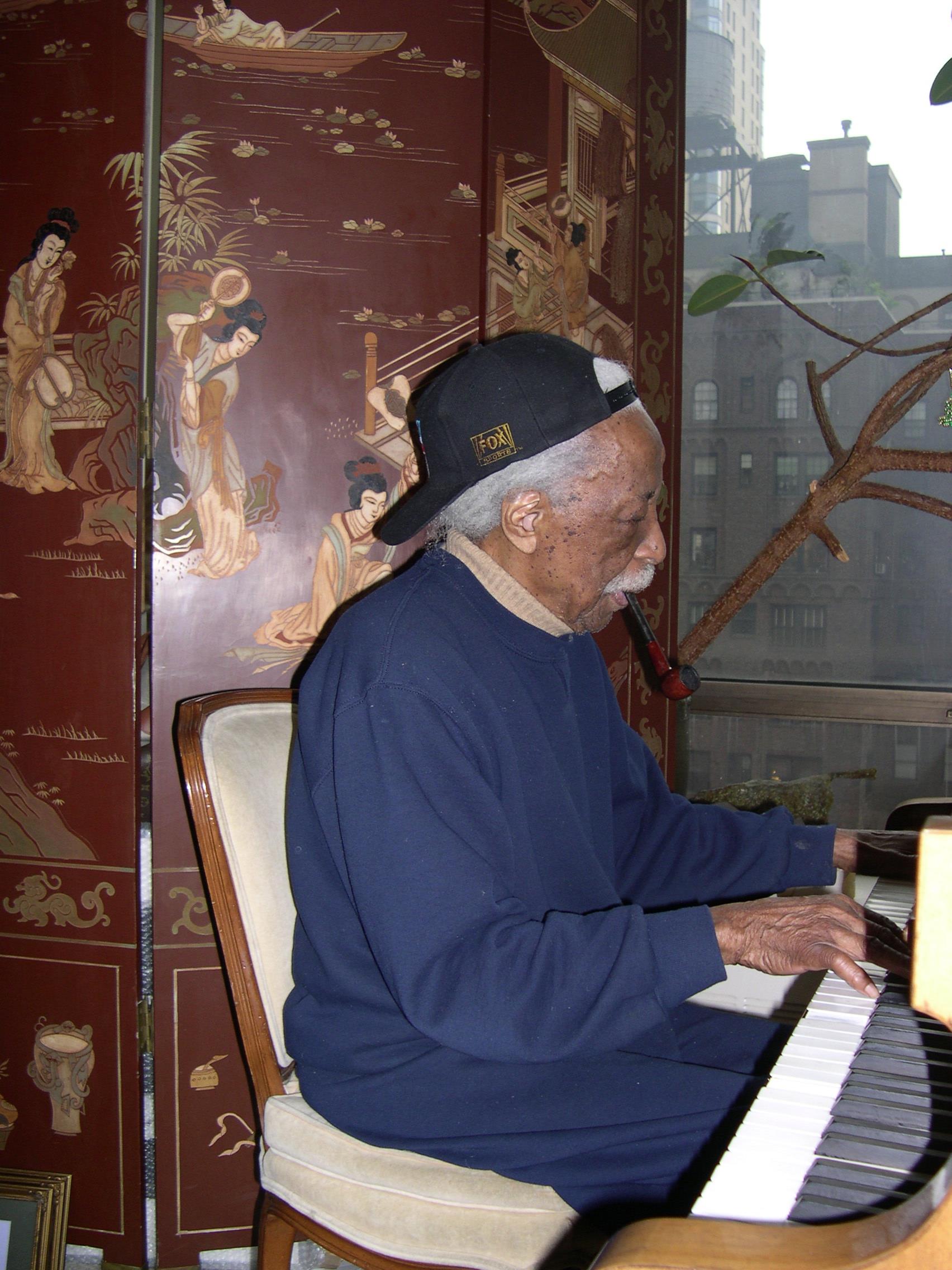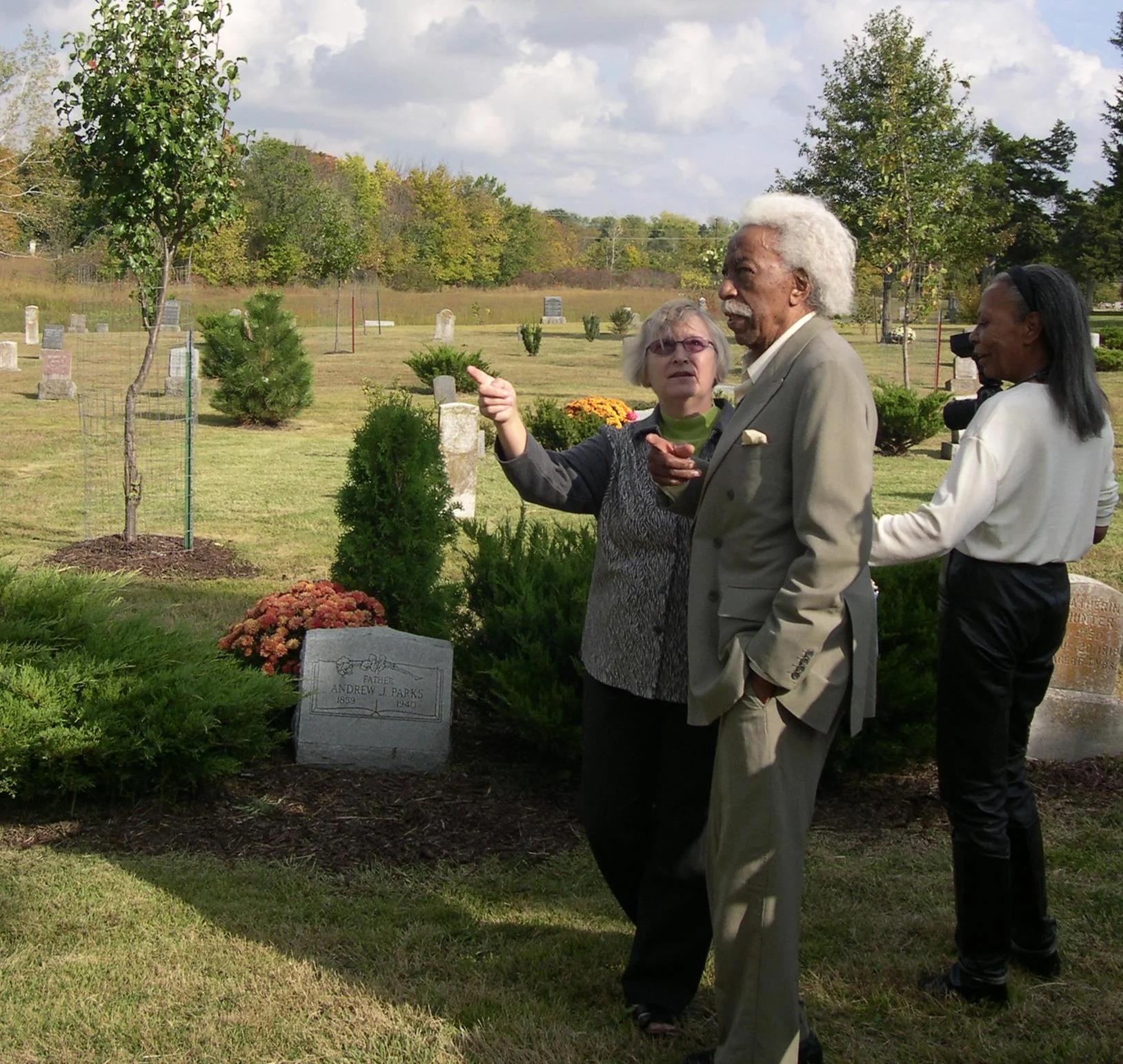Celebrate Gordon Parks
Gordon Parks with one of his favorite work tools and play things. His creative work with a camera permanently changed photo-journalism
The Gordon Parks Center for Culture and Diversity at Fort Scott Community College hosts this week, for the tenth time, a three-day commemoration of Gordon’s life and his many successes. Gordon himself attended the first celebration in 2003, at age 91. Dapper, enthusiastic, with hugs all around, he charmed all who joined the festivities, including Governor Kathleen Sibelius. It was a fine, memorable time.
The grand opening of the Gordon Parks Museum headlines this week’s events, and Jill Warford, director, promises a good time with interactive media, re-created portions of Gordon’s home, and hundreds of photographs to hold viewers’ attention. I’m doing presentations for Fort Scott fourth graders and fifth graders Thursday to kick off the week. Senator Nancy Kassebaum will be present to accept the annual Choice of Weapons award for her significant contributions to human rights, health care, and the creation of the Tallgrass Prairie National Preserve in the Kansas Flint Hills.
I had started writing about Gordon in 2003 and requested a personal interview with him in August. He called immediately and invited my husband and me to visit in his prestigious New York City UN Plaza apartment. We celebrated our 25th wedding anniversary with Gordon. Unforgettable. Books, paintings, sculptures, photographs, and awards filled every nook and cranny of his home. He cooked pasta for us, played the piano; we ate up his hospitality. As he described himself, “I’ve never given up my Kansas ways. I walk like a Kansan, and I talk like a Kansan. I have no reason to discredit my heritage.”
Gordon’s early childhood years in Fort Scott could be described as a study in opposites. His family was poor, but he didn’t know it. Papa kept a big garden and worked in a broom factory, while Momma served as a domestic for the town physician. They had enough to eat and clothes to wear—barely on both counts—and more than enough love and care to make up the difference. Gordon was dearly loved by both his parents and carefully nurtured by his fourteen older siblings, in contrast to Fort Scott’s response to Blacks, with separate schools, churches, and rules banning their presence in downtown stores.
When Gordon was fifteen, his world collapsed. Momma died of chronic respiratory problems. She had become his cherished friend and wise advocate, the one who made sense of his disparate, painful, maddening world. Before her death, she had arranged for him to live with his older sister, Peggy, in St. Paul, Minnesota, where she believed “color wouldn’t work so hard against him”. Little did Momma know that her own son-in-law would throw him out—literally—into Minnesota’s frigid, Arctic air during the bitter winter of 1927. Gordon survived by attending school during the day, working at a diner where he received one free meal a day, hanging out at Jimmie’s Pool Hall until it closed at midnight, and riding the slightly-warmer trolley until daylight when he could return to school. He soon found occasional waiter jobs at hotels and piano-playing gigs at dance halls to pay for a bed and a bit to eat. Between the biases he met at every turn and the Great Depression, he barely survived. His sister, Cora, who had moved to St. Paul with her family, helped as she could.
Gordon’s path eventually led him to the Civilian Conservation Corps, a President Franklin D. Roosevelt New Deal program, and soon to railroad jobs. He perused passengers’ left-behind magazines, mesmerized by photographs of Great Depression victims, attempting to cross the country and find a better life. He vowed that he would become a photographer who made pictures that impacted viewers as much as he was changed by the pictures in the leftover magazines. Ten years later, after continuous reading, studying, and visits to art museums, he walked into New York’s Life offices, bypassing secretaries and receptionists who never would have given a black man an appointment. Before the picture editor could throw him out, he had talked his way into a viewing of his portfolio. His career with Life spanned twenty-five years.
While with Life, he wrote features, and soon wrote his own books. During his lifetime, he published more than twenty books and made ten films. On his deathbed, he bemoaned that he didn’t have another 93 years to take more pictures, write more books, and compose more music. He truly embodied his mother’s most influential words: “If a white boy can do it, you can, too. And don’t come home with any excuses.” And that’s what we celebrate this week.
Music may have been Gordon's strongest passion. He said if he had life to do over, he may have studied to be a professional pianist.
Gordon Parks, with his daughter Toni and a friend from Lawrence in the Evergreen Cemetery in Fort Scott where he eventually would be buried.


